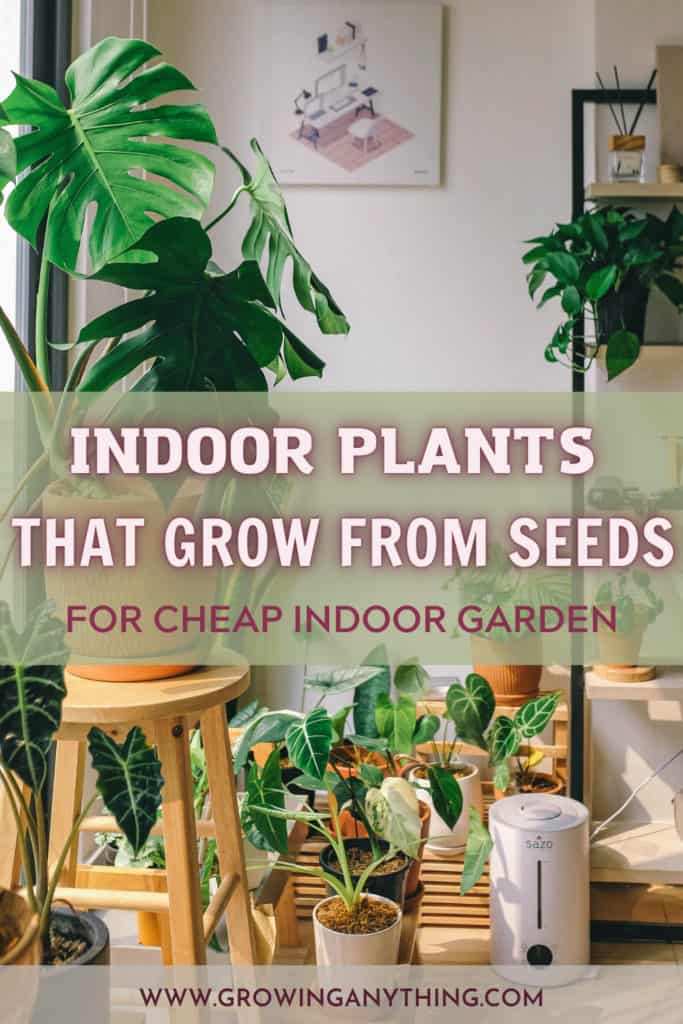18 Best Indoor Plants That Grow From Seeds
Do you know there are plenty of indoor plants that grow from seeds? The seeds are usually cheaper and readily available in local nurseries. Keep reading to find out which houseplants are easy to grow from seeds!
Sure, expanding your plant collection through established plants is a quick way to spruce your greenery display. But, using seeds to grow plants has its charms. First, of all, you get to witness the entire plant cycle.
It includes planting seeds, new growth, plant establishment, mature phase, and propagation. Also, if you are growing hybrid plants from seeds, you can expect a surprise when the plant establishes!
Here are indoor plants to grow from seeds!
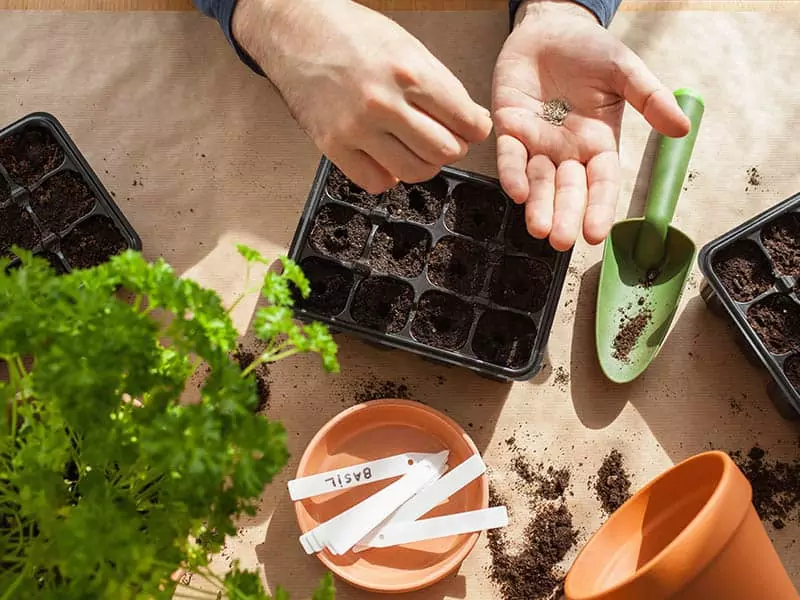
1. Maidenhair Fern
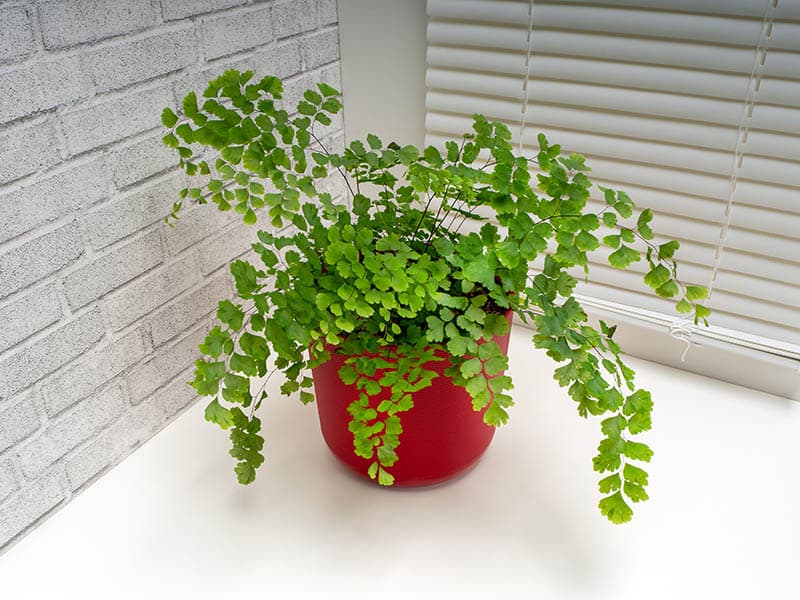
Maidenhair Fern, scientifically Adiantum, has the unfortunate reputation of being finicky and difficult to grow. But, the truth is, when you provide the best conditions for Adiantum, it will quickly become one of the easiest plants to grow.
Maidenhair produces spores that work the same as seeds for propagation. When you notice brown dots underneath leaf tips, cut the fronds. Then, put them between two paper sheets and let them sit like that for a week.
When the spores drop, just spread them in the soil in a small pot. Lastly, cover the pot with plastic wrap and put the pot in partial shade.
Water well in the following weeks!
Find out how to divide, prune and care for Maidenhair Fern.
2. Cordyline
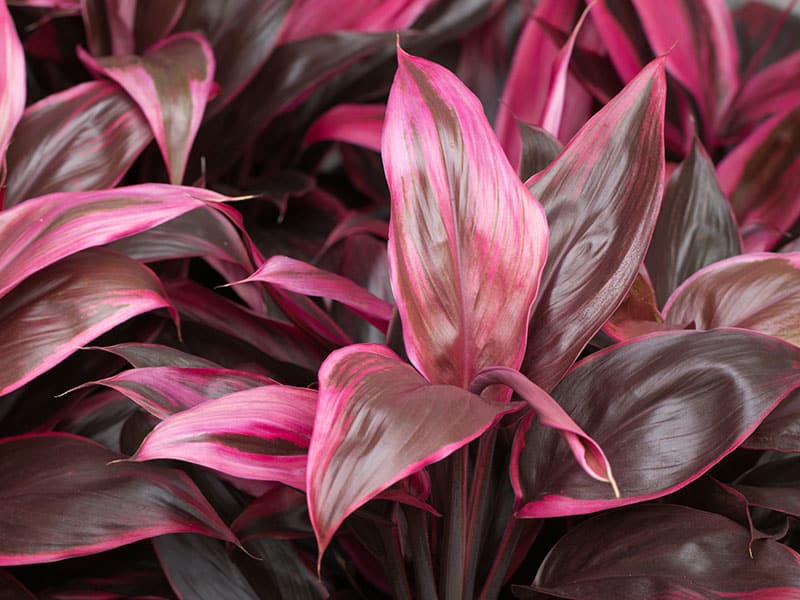
Cordyline fruticosa, shortly Cordyline, is a popular houseplant, which doesn’t require too much effort to thrive.
Cordyline looks exotic, but it is quite hardy and can survive mild winters outdoors. However, if you live in a colder climate, propagate and grow Cordyline indoors.
Two ways to propagate Cordyline are through established plants and seeds. Growing Cordyline from seeds takes time, and you may wait for several years for your plant to grow to an impressive size.
Mature Cordyline has few problems and grows well in most household conditions.
3. Peace Lily
Spathiphyllum aka Peace lily is one of the most wonderful houseplants. It is easy to grow even in low-light conditions, provides beautiful blooms, and can be started indoors from seeds!
When growing Peace lily from seeds, choosing potting mix is important. You can mix orchid mix, vermiculite, and coco coir for the best soil mixture for seed germination. The vermiculite alternative is a mix of perlite and peat moss.
After you plant seeds in a pot, cover seeds with a light soil layer and add plastic wrap on top. Keep the pot in bright and filtered light and maintain consistent irrigation for best results.
4. Arrowhead Plant
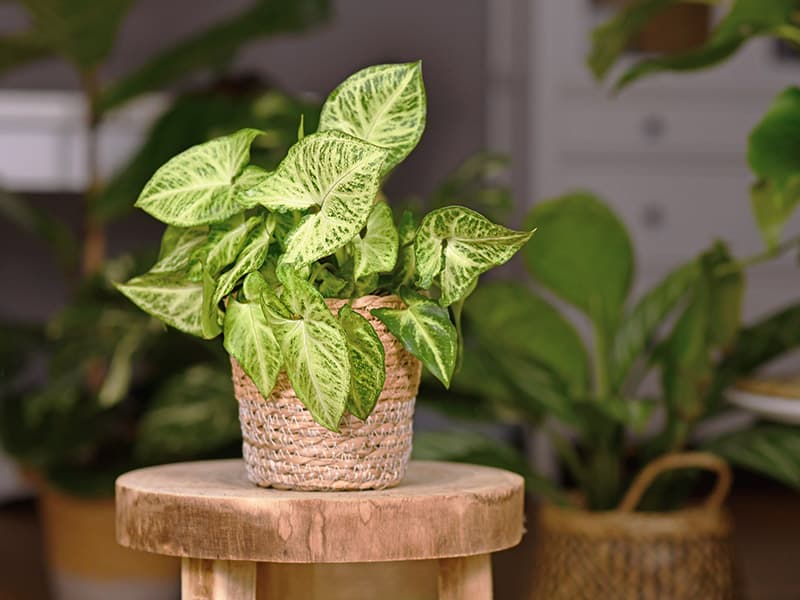
Syngonium podophyllum or Arrowhead is an adaptable plant. It prefers bright light but may burn in direct sun. In addition, the variegated cultivars or Arrowhead can tolerate more light.
The ideal time to propagate Arrowhead via seeds is late fall. Keep evenly moist. The trick is to be patient, and the seeds will germinate after they experience different temperatures, including warm and cold.
You can use a standard potting mix but ensure good drainage. Sowing seeds in terracotta or clay pots will have the best results.
As the plant develops and establishes, it will need consistent moisture, especially during the growing season. In winter, reduce the watering frequency, and give the soil time to dry between two waterings.
5. Creeping Inch Plant
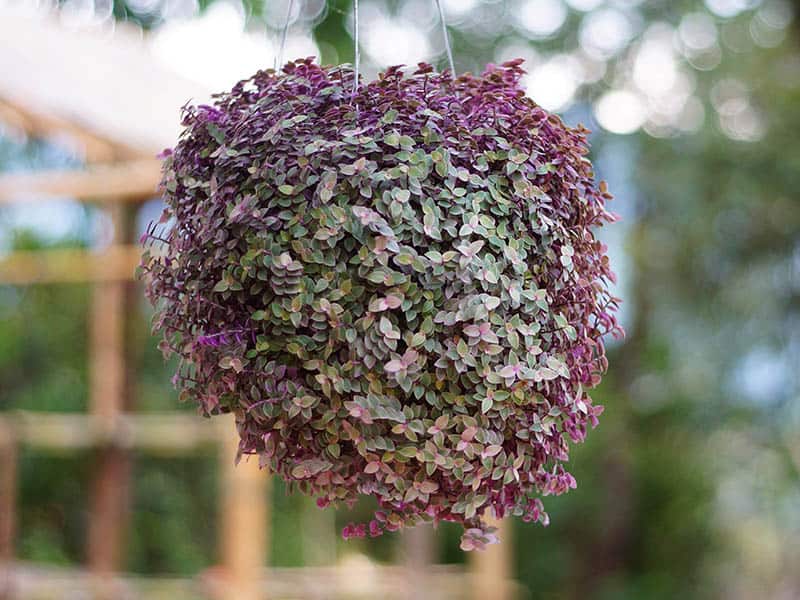
Creeping Inch plant or Callisia repens is a wonderful houseplant with pinkish and green leaves. It is easy to grow indoors and remains compact. Therefore, Creeping Inch is a great mini plant for limited space.
The foliage is miniature and cascades over the edge of a pot. There are several adorable varieties of Creeping Inch plants with wonderfully variegated leaves.
It is a semi-succulent which can be started from seeds and cuttings. Propagation via seeds takes time, and the process is simple. Put the seeds in moist, well-draining soil and position the pot in a bright location.
6. Hibiscus
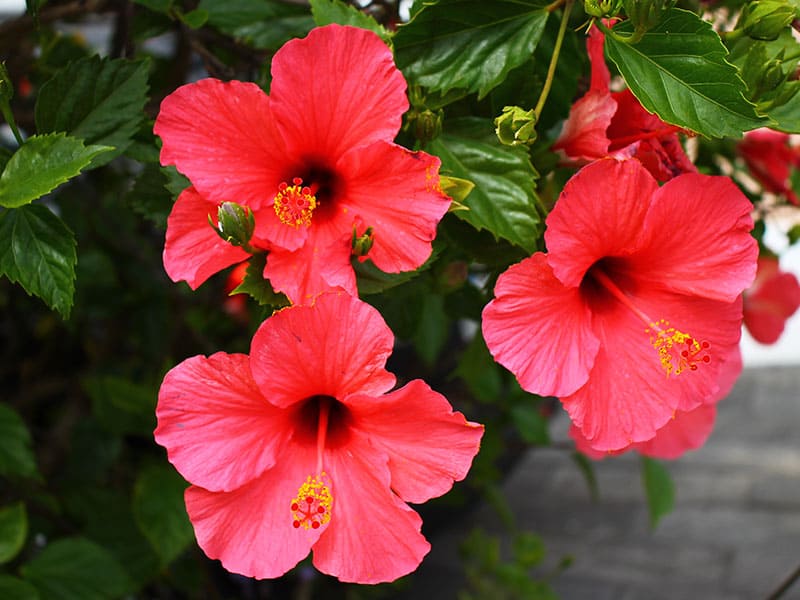
Beautiful Hibiscus takes time and skill to grow from seeds, but it is manageable. In the blooming season, Hibiscus will transform any outdoor or indoor setting. Its colorful blooms bring the tropical vibe and brighten up even the darkest corners.
To grow Hibiscus from seeds, I recommend starting the process indoors. It will significantly reduce the germination time.
Also, take the ends of seeds with a round knife to ensure more moisture enters every seed. Soak seeds in water for at least eight hours before you plant them in a tray or pot.
A warm sunny space is excellent for seed germination.
When the plants grow significantly, transplant them to a bigger pot.
7. Wandering Jew
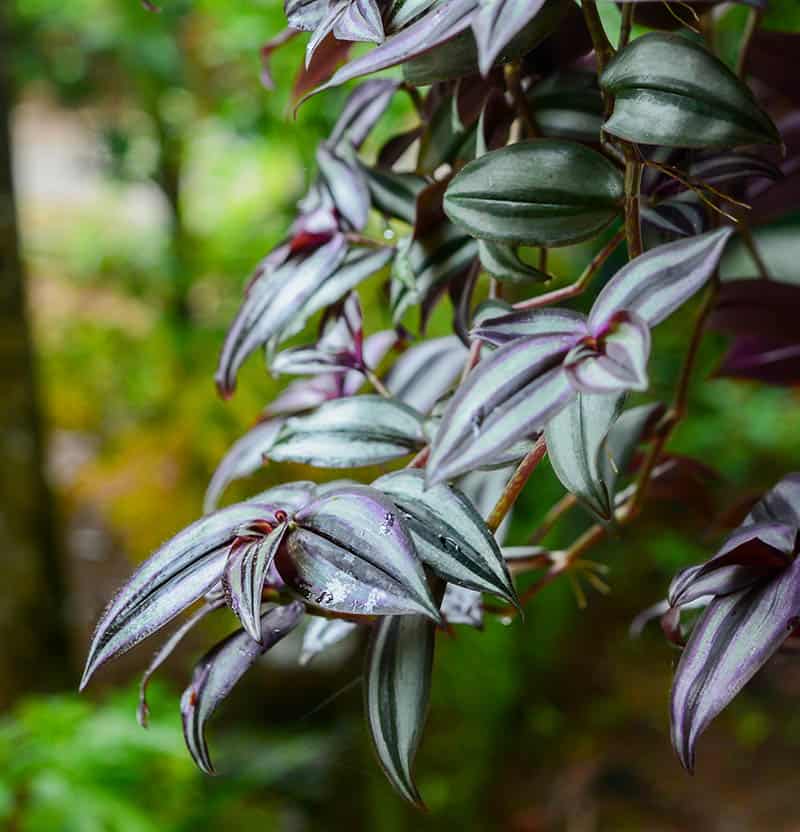
Tradescantia pallida or Wandering Jew is an easy-going and beginner-friendly plant. In fact, a Wandering Jew can adapt to various conditions, as long as it receives enough sunlight. The plant also cannot survive soggy soil.
If you provide good care to the plant, your Wandering Jew may grow one inch a week! On average, if you propagate it from established plants, your Wandering Jew might need only six months to grow to the full size.
Wandering Jew started from seeds needs more time to establish and develop to its full potential.
Put Wandering Jew seeds in well-draining and fertile potting soil. Cover them lightly with soil, and keep the distance between seeds. Maintain the warm temperature in the room where you keep the seeds. The ideal is above 55 degrees Fahrenheit.
The germination takes from one to six weeks. Once the plant pokes through the soil, transplant it to the larger pot or outdoors.
Another thing to know about Wandering Jew is that it can bloom twice a year, in spring and fall! In the autumn, put the pot in a bright location, and water more.
Wandering Jew blooms with small and colorful three-petaled flowers, in bright shades of purple, pink, and white.
8. Pepper Face
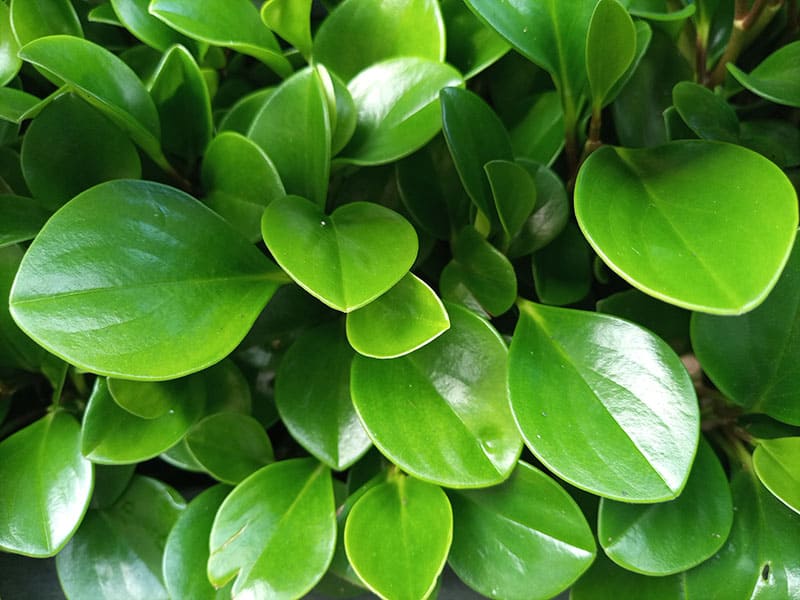
Peperomia obtusifolia or Pepper Face is an attractive and fast-growing and low-maintenance plant. You can grow it from seeds or a transplant.
The first option takes more time, but the results are the same! The key to success when growing Peperomia obtusifolia is to purchase seeds from reputable nurseries. The sowing process is quite simple.
Once you’ve collected your seeds, put them in the soil in chosen containers. Cover the seeds with soil and water well. Keep the container in a warm and sunny position. Until germination, the soil needs to be consistently moist.
Once the seedlings appear, transplant them into larger containers with pH from 6.0 to 6.5. Keep the container in bright and indirect sunlight!
The alternative to seed propagation of Peperomia obtusifolia.
9. Polypodiopsida
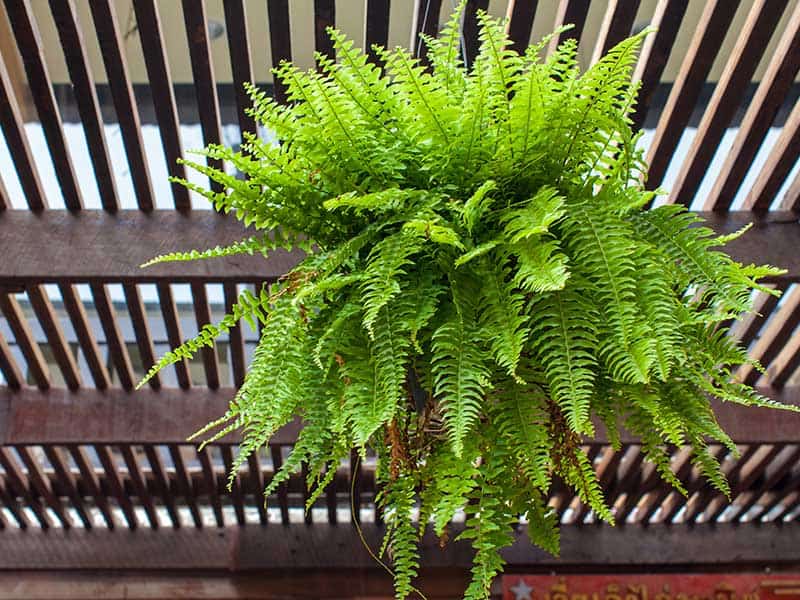
Polypodiopsida is the scientific name for the large group of plants you probably recognize as Ferns! You can propagate them from spores, which are equivalent to the seed propagation of other plants.
Growing Polypodiopsida is simple. The most challenging part is finding the spores in nurseries. Once you get spores it will take two life cycles until you get grown-up ferns. Spores develop prothallus, a preliminary plant, which further needs propagation to create mature fern!
The process is interesting and great for learning more about Mother Nature and its life cycles!
10. Pothos
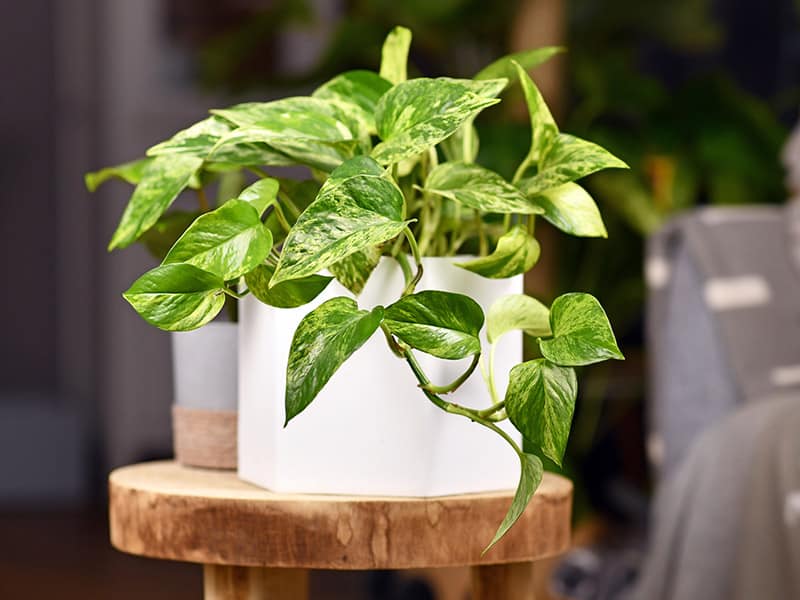
Pothos or Epipremnum aureum is another beautiful houseplant with low-maintenance nature and simple propagation. Growing Pothos from seeds is convenient for many reasons. The propagation is simple, the seeds are cheaper than transplant plants.
Moreover, you can buy seeds online because they don’t require special conditions for shipping.
Sow seeds in a medium pot and ensure it receives two or three hours of sunlight. Water the seeds regularly and expect germination in two weeks!
11. Spider Plant

Chlorophytum comosum or Spider plant is easy to recognize by its spiderettes. They sprout from stalks and cascade over container edges. A less known fact is that the Spider plant blooms! The beautiful delicate flowers may be disguised by the spiderettes.
Plant the seeds as soon as you get them. Put them deep in a potting mix, and keep the soil moist and warm.
Don’t worry if nothing happens in the following weeks. Spider plant seed germination takes several weeks. Also, when the seedlings appear, wait until they are stronger to transplant them.
12. Rubber Plant
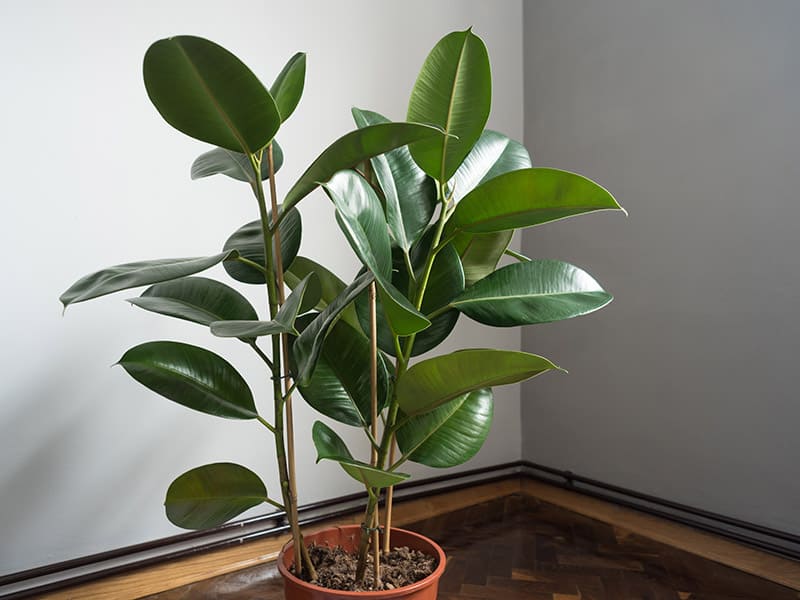
Many people don’t even know that the Rubber plant or Ficus elastica blooms and produces seeds.
Seeds are large and need to be placed on the soil surface. Cover them lightly with soil. The trick when growing a Rubber plant from seeds is to keep the pot away from sunlight but in a warm room with a consistent temperature.
You can also cut the plastic bottle and create a mini greenhouse to speed up the process.
As the plant grows, you can move it to a sunny position and watch it thrive!
13. Heartleaf Philodendron
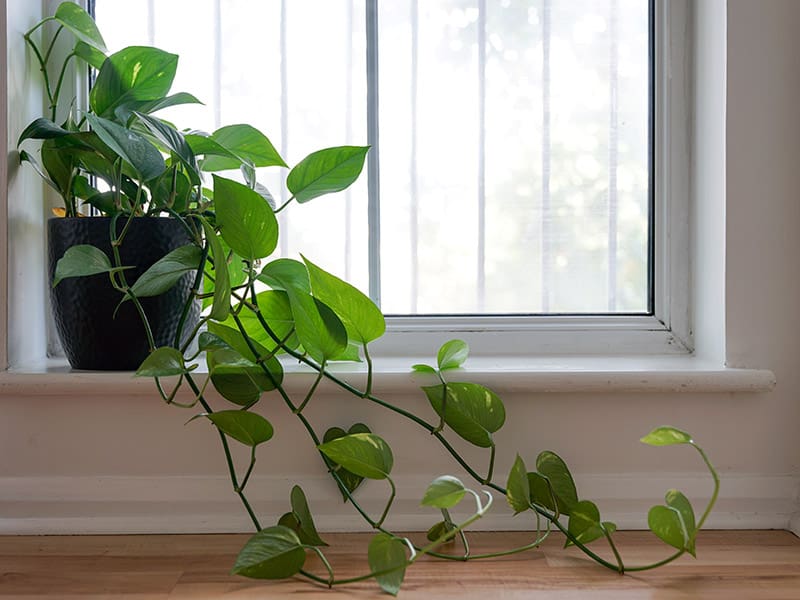
Philodendron hederaceum or Heartleaf Philodendron is one of the easiest houseplants to start from seeds. At the same time, it has lengthy germination. Take your Heartleaf Philodendron seeds and plant them in standard soil.
Keep the container or tray in a warm room, with a consistent temperature between 68 and 73 degrees. The soil needs to remain moist but not soggy. The best way to do it is to spray the soil frequently!
The germination may take up to eight weeks.
After sprouting, transplant your seedlings to smaller pots.
14. Fiddle Leaf Fig
Growing Fiddle Leaf Fig or Ficus lyrata from seeds is possible but tricky. You can get seeds online, and you need to provide specific conditions for your plant to grow successfully.
Germination takes three months, and the seeds are susceptible to problems. If nothing happens within three months, try one more time.
After you sow Fiddle Leaf Fig seeds, keep the tray in a warm space, but protected from direct sunlight. The soil needs to have excellent drainage, and germination occurs only if there aren’t sudden temperature changes and drafts. The humidity also needs to be above average for germination to start.
15. Chinese Money Plant
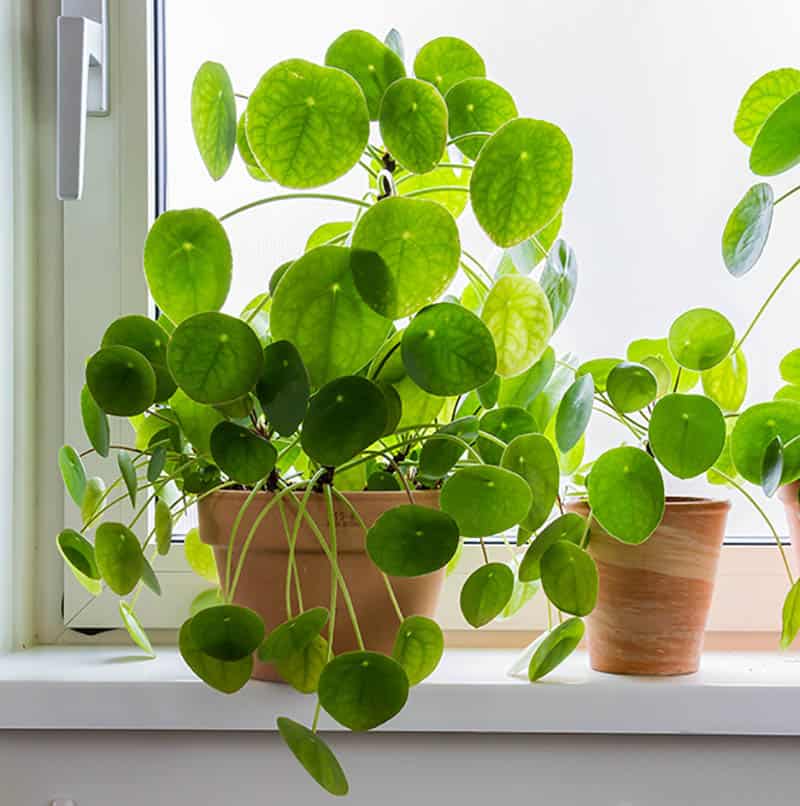
Pilea peperomioides, or the famous Chinese Money plant is a modern and common indoor plant. People love it because of its easy-going nature and attractive appearance.
Growing a Chinese Money plant from cuttings is simpler than starting the plant from seeds. However, if you picked seeds as your propagation method, you need to be patient for the results to happen.
Only buy seeds from reputable nurseries. Germination happens only with fresh seeds.
Propagating Chinese Money plant from seeds takes time. After establishing, the growth rate is faster, and the plant only requires straightforward care.
16. Aloe Vera
Most people adore Aloe vera because of the ornamental and foliage which has a wide application in homemade hair and skin treatments! Growing Aloe vera from seeds is possible and simple.
After you sow Aloe vera seeds, the sprout will appear without any special effort! You can even increase your success rate if you sow the seeds in a mixture of sand and peat to make a well-draining medium.
The science behind it is that Aloe vera grows best in loose and airy soil. Keep your Aloe vera seeds warm and add plastic wrap on top to boost the humidity and speed the process.
17. Bamboo
Starting Bamboo from seeds is easier than you think and you have a high chance for success! The trick is to soak Bamboo seeds in water for 24 hours before planting them. Plant the seeds in warm soil and wait for two weeks to notice new growth!
The ideal temperature for soil is between 70 and 80 degrees Fahrenheit!
Once seedlings appear, transplant your Bamboo in a larger container.
18. Snake plant
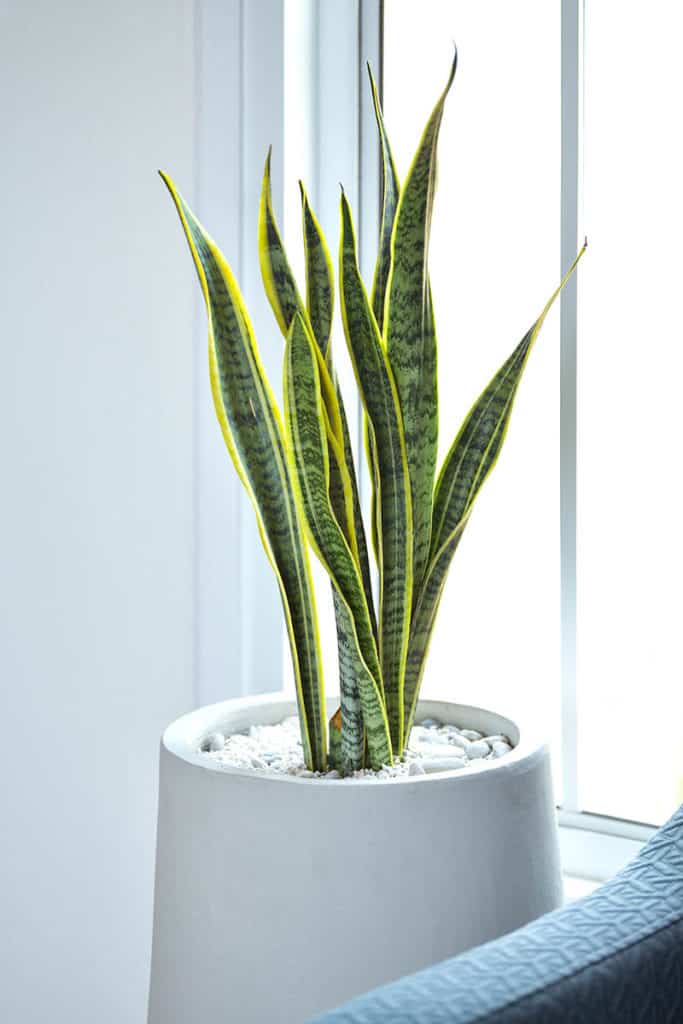
Sansevieria Trifasciata or Snake plant is a beginner-friendly and hardy plant. It is quite hard to kill, but challenging to start from seeds.
Your success rate depends on the quality of your seeds. Only buy Snake plant seeds from trusted sources to boost the germination change! Once your seed arrives, clean them and plant them in moist and well-draining soil.
Cover the seeds with potting soil and maintain warm temperature and consistent humidity and moisture. If the germination is successful, the seedling will appear in three to six weeks.
Tips for starting Snake plant from seeds.
Patience Pays Off With Indoor Plant Seeds
Propagation via seeds is an excellent way to improve the diversity of your plants! The process might take longer than other propagation modes, but once you see the first sprouts, you’ll see that your patience paid off!
If you are up for a challenge, try growing Fiddle Leaf Fig from seeds! However, I will stick with Bamboo for now!
Share your thoughts on my list and come back for more interesting gardening lists.
